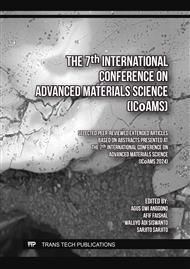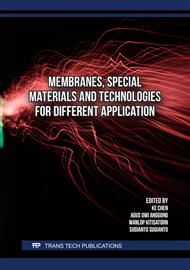p.49
p.55
p.61
p.67
p.75
p.81
p.95
p.101
p.109
Impact of Surface Treatment and Curing Conditions on the Mechanical Properties of OPS Lightweight Concrete
Abstract:
This study investigated the use of Styrene Acrylic Emulsion (SAE) as a surface treatment for Oil Palm Shell (OPS) aggregates to enhance the mechanical properties of lightweight concrete. SAE, known for its superior adhesion, was applied to OPS to create a protective layer, addressing a gap in current research on OPS concrete. The research examined the impact of SAE-treated OPS under various curing conditions, assessing the compressive, flexural, and splitting tensile strengths. Results demonstrated that continuous water curing (NW) was the most effective for improving the compressive strength of treated specimens, particularly those with moderate SAE treatment (5%, 10%, and 15%). Specimens with 25% SAE treatment (ST25) exhibited reduced strength due to clumping and increased porosity. Flexural and splitting tensile strengths also improved with SAE treatment, with ST5 showing the highest flexural strength and ST10 performing best in splitting tensile strength tests. Alternating curing (AC) conditions showed moderate success, while external curing (EC) conditions negatively impacted strength due to rapid thermal cycling. Overall, the SAE treatment significantly enhanced the bond between the OPS particles and cement matrix, improving the mechanical performance of OPS lightweight concrete. These findings suggest that SAE-treated OPS could provide a sustainable and effective solution for concrete production.
Info:
Periodical:
Pages:
101-107
Citation:
Online since:
December 2024
Keywords:
Price:
Сopyright:
© 2024 Trans Tech Publications Ltd. All Rights Reserved
Share:
Citation:



